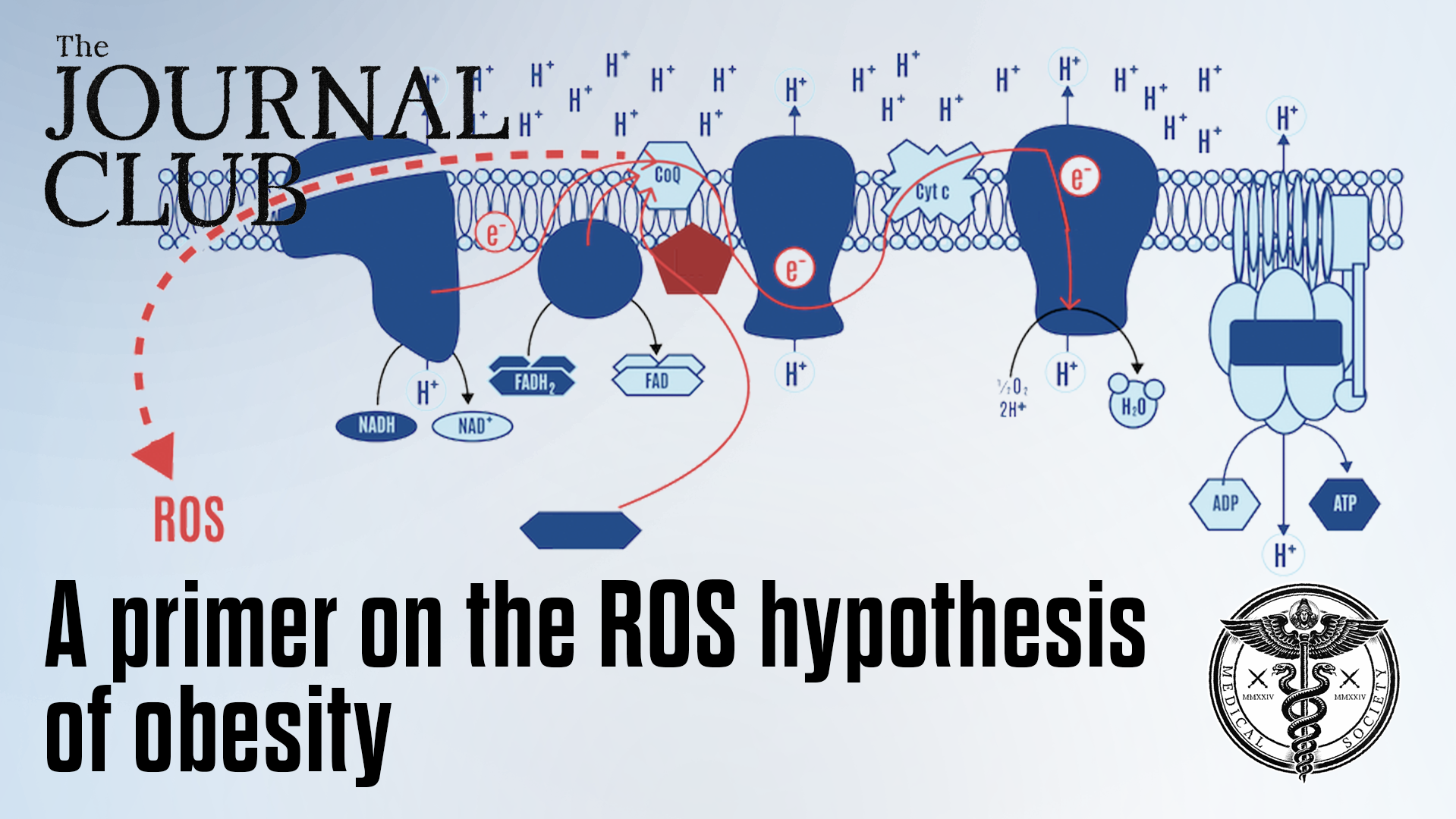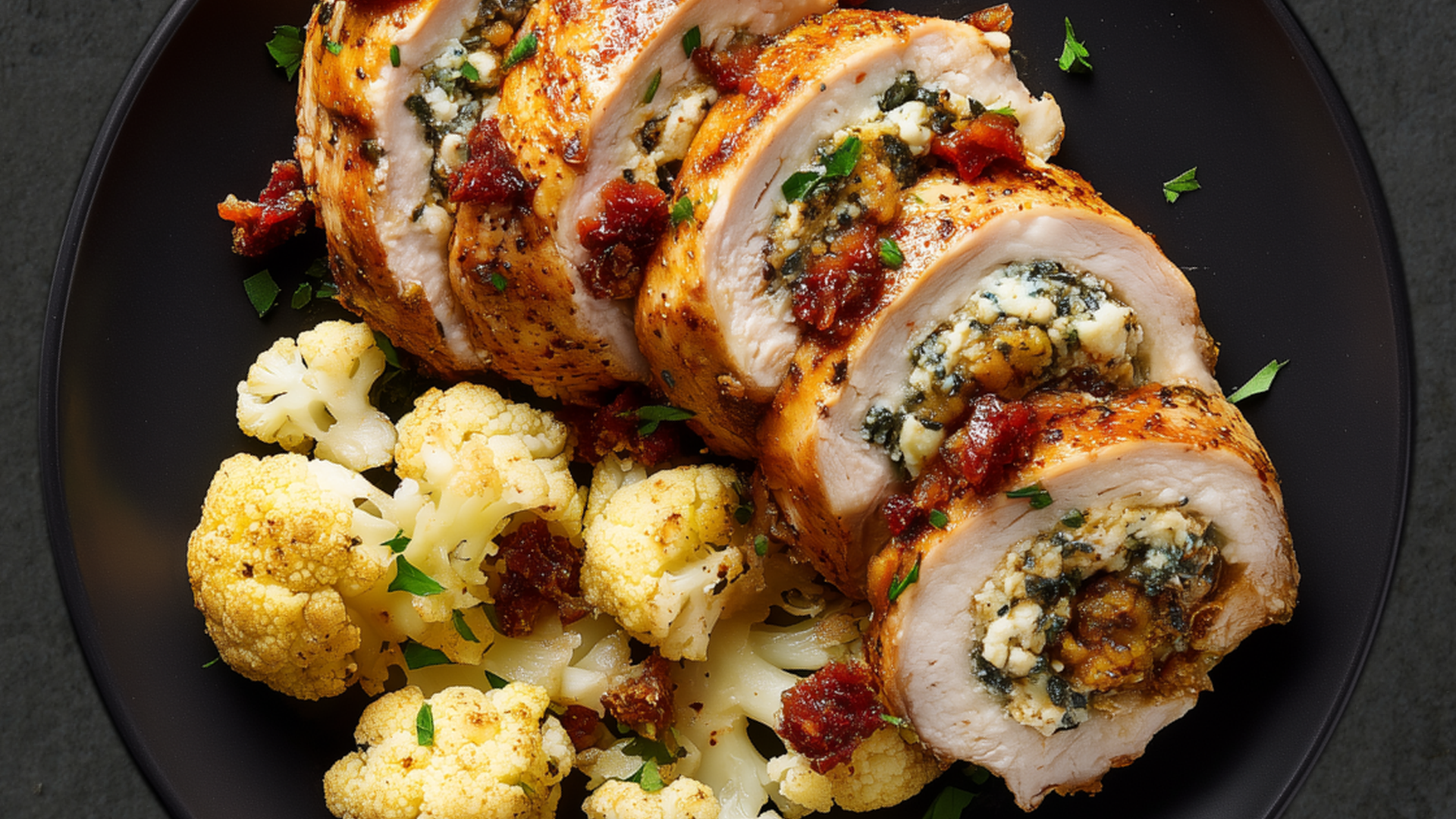The
Daily
Fix
The Total
Stuffed Chicken Breasts with Cream Cheese and Sun-Dried Tomatoes
Journal Club

For load:
Back squat 1-1-1 reps
Shoulder press 1-1-1 reps
Deadlift 1-1-1 reps
Chicken breasts filled with a rich cream cheese mixture, sun-dried tomatoes, and herbs, then pan-seared and baked.
A Primer on the ROS Hypothesis of Obesity
Warm up for each, then take 3 attempts at each lift, trying to set a 1-rep-max.
Compare to 250713.
Post amount lifted for each as well as the sum of your highest lifts to comments.
Ingredients
2 (6 oz) boneless, skinless chicken breasts
Salt and pepper, to taste
½ tsp garlic powder
½ tsp onion powder
1½ Tbsp butter or tallow (for searing)
Toothpicks or kitchen twine (for securing)
1 tsp olive oil (cold drizzle for finishing)
¼ cup cream cheese, softened
2 Tbsp chopped sun-dried tomatoes (oil-packed, drained)
¼ cup shredded mozzarella or Parmesan cheese
1 Tbsp chopped fresh basil (or ½ tsp dried)
¼ tsp black pepper
Macronutrients (per breast, makes 2)
Protein: 42g
Fat: 33g
Carbs: 4g
Preparation
In a small bowl, mix softened cream cheese (¼ cup), sun-dried tomatoes (2 Tbsp), mozzarella (¼ cup), basil (1 Tbsp), and black pepper (¼ tsp) until well combined.
Preheat oven to 375°F (190°C). Slice a deep pocket into the side of each chicken breast (without cutting all the way through). Season both sides with salt, pepper, garlic powder (½ tsp), and onion powder (½ tsp).
Stuff each chicken breast with half the cream cheese mixture. Secure the edges with toothpicks or kitchen twine.
In an oven-safe skillet, heat butter or tallow (1½ Tbsp) over medium-high heat. Sear the stuffed chicken breasts for 3–4 minutes per side, until golden.
Transfer skillet to the oven and bake for 15–18 minutes, or until internal temp reaches 165°F (74°C). Let rest for 5 minutes before serving.
Slice and serve with sautéed spinach or roasted vegetables. Drizzle with olive oil (1 tsp) if desired.
On September 25, 2025, the BSI Medical Society Journal Club, hosted by Bob Kaplan with contributions from Pete Shaw, continued their exploration of redox biology. In this session, they turn from insulin resistance to the broader Reactive Oxygen Species (ROS) Hypothesis of Obesity, based on theories by Peter Dobromylskyj. The discussion built on prior Journal Clubs reviewing “Insulin Resistance as a Cellular Antioxidant Defense Mechanism” and “ROS Are Good,” tracing how mitochondrial signaling may regulate nutrient handling and fat storage. Bob outlined how ROS, long viewed as harmful byproducts, act as ancient, essential metabolic signals that coordinate energy flux between the mitochondria and the cell. When dietary fats—particularly linoleic acid–rich seed oils—lower ROS generation, the mitochondria’s “brake” on insulin signaling weakens. Cells remain insulin-sensitive longer than they should, driving continued nutrient uptake and fat accumulation. Within this framing, obesity represents a failure to generate adequate ROS at the right time—a redox imbalance rather than a simple surplus of calories.
Expanding the concept, Bob and Pete positioned the ROS model within a hierarchy of metabolic theories—from the carbohydrate-insulin and fuel-partitioning frameworks to the broader evolutionary mismatch between ancestral diets and modern food environments. They argued that polyunsaturated fats, through their dampening effect on mitochondrial ROS, create an inappropriate state of cellular energy oversupply that promotes insulin sensitivity when resistance would normally act as a protective feedback. In contrast, saturated fats generate sufficient ROS to signal satiety at the mitochondrial level, aligning energy intake with demand. Bob and Pete emphasized that this perspective reframes “seed oil harm” as a redox signaling problem rather than an inflammatory one and may explain why high-fat ancestral diets or ketogenic approaches restore metabolic balance. Participants reflected on how these ideas challenge conventional obesity models, offering a unifying mechanism that connects nutrient composition, mitochondrial signaling, and the physiology of energy storage.
The archive of this BSI Journal Club is available here free, for anyone, while most Club meetings are only available for Medical Society Members and MetFix affiliates, in their dashboard.
Bob and Pete will continue on this topic in this week’s Journal Club, the morning of Friday, October 31st.

Press: 115-125-135F
DL: 275-315-335F-315